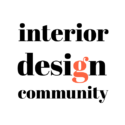
Pricing your interior design services is as much about confidence as it is about strategy. Many designers face challenges in justifying their rates, especially in competitive markets. However, a clear understanding of your value and a structured approach to discussing fees can transform these conversations into opportunities.
In this post, we’ll delve into strategies for negotiating higher fees with confidence, focusing on the balance between showcasing value and maintaining professionalism.
The Foundation: Know Your Worth
Before you can confidently discuss higher fees, you must believe in the value you bring to the table. This means understanding the unique aspects of your expertise and communicating them effectively.
- Highlight Your Experience
Clients often undervalue the years of training, creativity, and problem-solving skills that designers bring to a project. Create a portfolio that showcases your most successful projects, complete with before-and-after photos and client testimonials. - Emphasize the Full Scope of Services
Many clients underestimate the breadth of work involved in interior design. From sourcing and procurement to liaising with contractors, your role extends far beyond picking furniture and colors. Break down your services in proposals to illustrate the comprehensive value you provide. - Benchmark Your Rates
Compare your pricing with industry standards in your area. While this doesn’t mean setting your rates solely based on competitors, it helps to understand where you stand and adjust as needed.
Strategies for Negotiating Higher Fees
1. Present Added Value
Instead of focusing solely on the cost, frame your fees around the value you provide. Highlight how your services save clients time, prevent costly mistakes, and enhance their quality of life.
For example:
- Emphasize your network of trusted vendors and suppliers.
- Showcase your ability to manage complex projects efficiently.
- Illustrate your expertise in creating designs that align with clients’ personal styles and needs.
2. Avoid Immediate Discounts
Never start a negotiation by offering discounts. Instead, establish your rate as a reflection of your expertise and effort. Discounts, if offered, should only be tied to specific reductions in scope or add-ons.
3. Discuss Fees in Person
Whenever possible, discuss fees face-to-face or via video call. This allows you to gauge the client’s reactions, clarify misunderstandings, and present your confidence in your rates.
4. Use Market Comparisons Strategically
If prospective clients question your fees, be prepared to explain how your services compare to others in the market. Highlight what sets you apart, such as unique skills, certifications, or design achievements.
5. Factor in Inflation and Business Costs
Ensure your rates reflect the current market conditions and rising operational costs. Annual evaluations can help adjust your fees to match your growing experience and overheads.
Insights from the Interior Design Community
Here’s how some designers approach setting and negotiating fees with confidence:
- Waldron_Designs: “We evaluate our rates annually. If there’s never any pushback, it’s probably too low. There is no negotiation. Those are our rates. Take it or leave it.”
- Lanotthecity: “An attorney friend told me I needed to raise my rates $50/hour. I hesitated, but they said if I were a man, I’d have raised them $100/hour without a second thought. I went with an extra $75/hour unapologetically. Now I make more and barely market myself.”
- MillieTurnerDesigns: “Start higher with wiggle room to negotiate down. For us, our fees are non-negotiable. If a client wants a lower fee, it comes with a reduced scope.”
- ThymeAndPlaceDesign: “If clients want to negotiate your charges, as hard as it may be, walk away. Know your worth and charge accordingly.”
Red Flags to Watch For During Fee Negotiations
Negotiations can reveal a lot about prospective clients. Here are some warning signs that may indicate potential issues:
- Fixation on Cost Over Value
Clients who focus solely on the price often fail to appreciate the value of professional design services. - Comparisons to DIY Options
If clients compare your fees to the cost of doing the work themselves, they may lack an understanding of what your expertise entails. - Repeated Pushback on Rates
Negotiating is one thing, but constant objections to your pricing may indicate a lack of respect for your skills. - Unrealistic Expectations
Clients expecting top-tier services for bargain prices may not be the right fit.
Boosting Confidence in Your Pricing
1. Reframe Your Mindset
View fee discussions as an opportunity to showcase your professionalism and value rather than a challenge to defend your worth.
2. Prepare in Advance
Practice discussing your fees and answering potential objections. Confidence often stems from preparation.
3. Build a Strong Portfolio
A robust portfolio speaks volumes about your capabilities and justifies higher fees. Include high-quality visuals, testimonials, and case studies.
4. Leverage Testimonials
Client testimonials and referrals provide social proof of your value. Share these during consultations to reinforce your expertise.
5. Set Clear Terms
A well-structured contract that outlines payment terms, scope, and additional fees helps set expectations from the start and reduces the likelihood of disputes.
Final Thoughts
Negotiating higher interior design fees requires a combination of confidence, preparation, and clear communication. By understanding your worth and presenting it effectively, you can secure higher rates while maintaining strong client relationships.
Your Turn!
What strategies have you used to confidently close deals at higher rates? Share your tips in the comments below!



